Object of Pride: The History of Abkhazian Male Dress
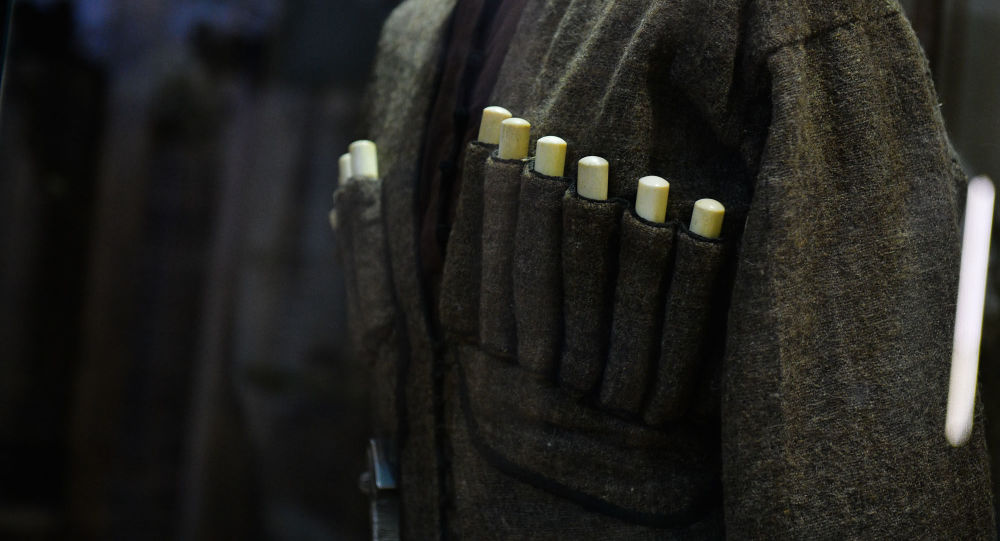
Photos by Thomas Thaytsuk | © Sputnik
For how Abkhazian male dress has changed, how important it is in the life of the Abkhazians, how it won world-popularity and what the future of the cherkesska is, read in this Sputnik material.
Saria Kvaratskhelia, Sputnik Abkhazia | 05.03.2019
“Anna walked with bowed head and playing with the tassel of the hood. Her face glittered with bright brilliance, but this brilliance was unhappy ...,” is how the ninth chapter of one of the most famous novels of Leo Tolstoy ‘Anna Karenina’ begins.
In the second half of the XIX century, the Caucasian national costume gradually entered Russian fashion, firstly via separate elements like the hood, and then in its entirety. The imperial army and members of the royal family dress in the cherkesska. A little later, in the capital of European fashion, Paris, houses of "Caucasian origin" appear, which in the early 20s of the last century brought Caucasian motifs into fashion. The cherkesska quickly gained popularity; representatives of the European aristocracy began to dress in it; it was also present in the collections of fashion houses. But first things first.
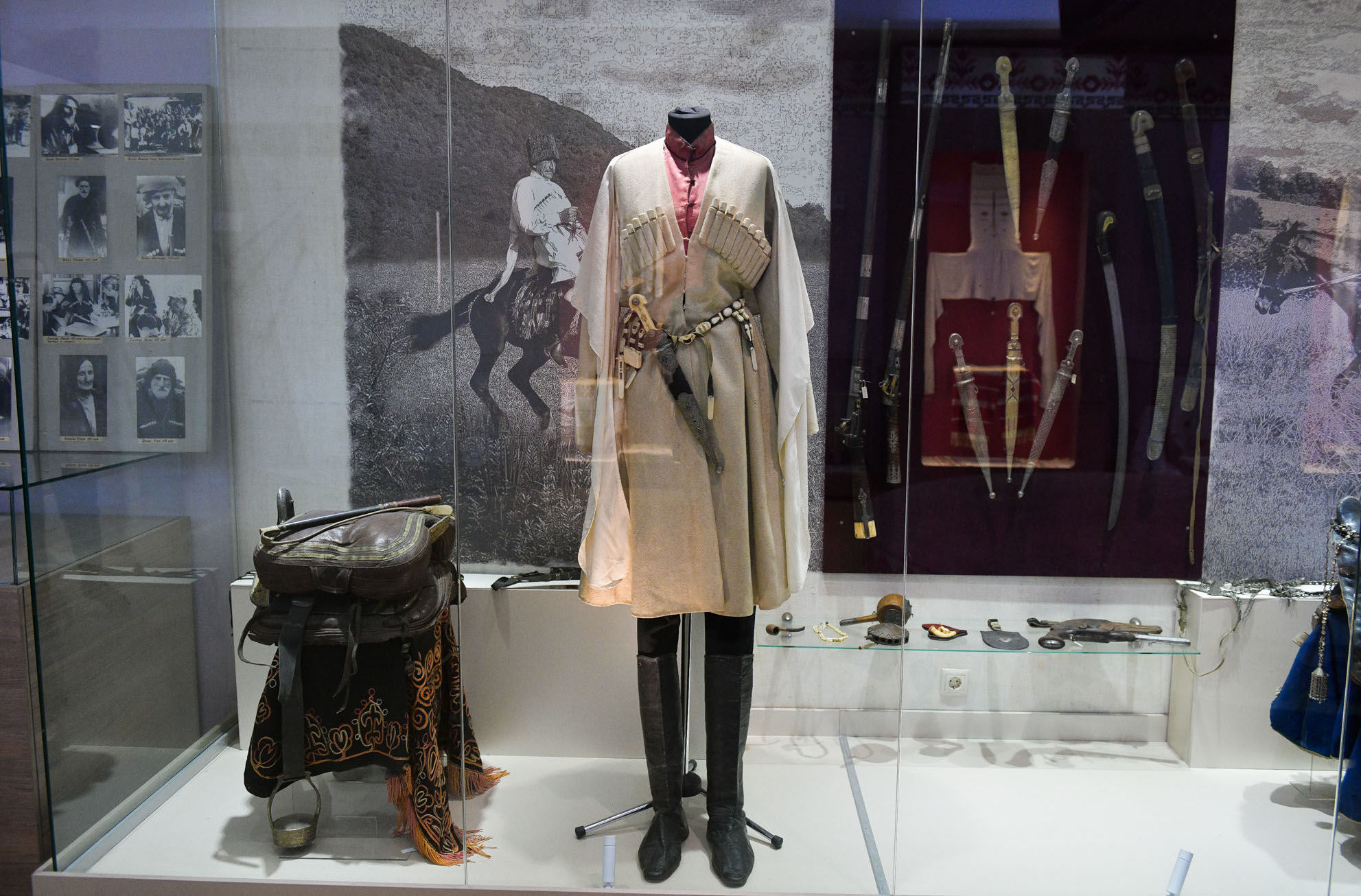
Roots of the Cherkesska
The Abkhaz language surprisingly reflects the diversity and richness of the national male costume. Each item of clothing has its own term.
Male dress consisted of: the tunic, known as the ‘cherkesska’ but in Abkhaz akW’ymzhWy; shirt ak’aba; trousers adzikwa [or ajkwa — translator’s addition]; woollen jacket agwabanakj; heavy felt cloak awap’a; headgear, consisting of: bashlyk axtarpa; felt hat awaptswa xylpa; fur hat axylparch. On their legs they wore: rawhide sandals azhwtsweymaa, worn on bare feet[; tight-fitting soft-leather gaiters ajmsy — translator’s addition].
"Cherkeska — the Russian name for the top item of male dress — is a caftan, which was common among many Caucasian peoples", which is how the Great Soviet Encyclopedia defines the male national costume of many Caucasian peoples.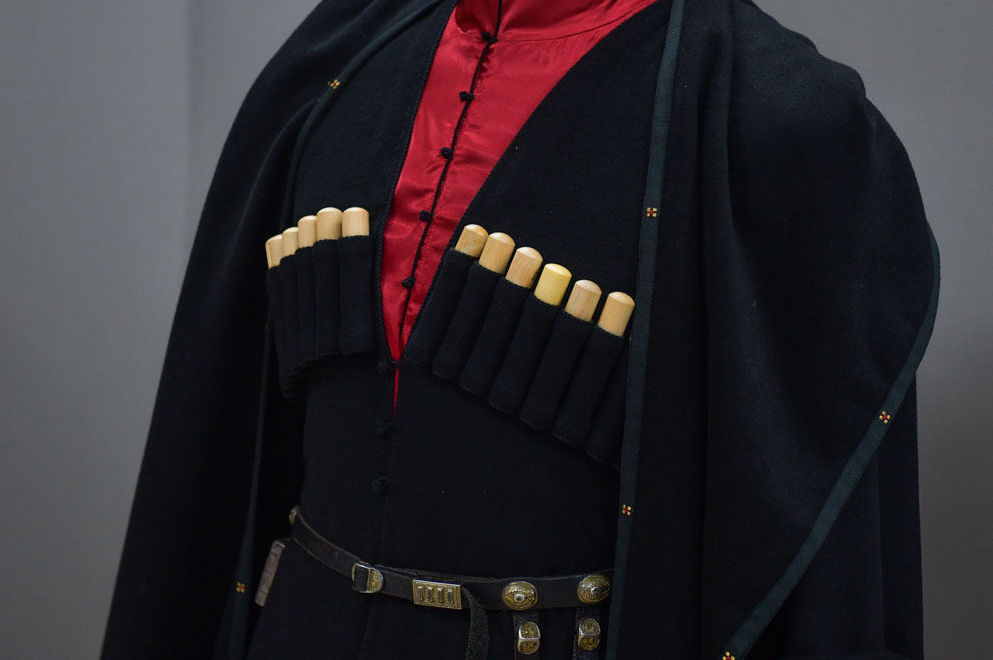
Cherkessa, or in Abkhaz akw’ymzhwy — the traditional male costume of the Abkhazians.
According to the ethnologist Elena Malia, national costume is a rich source that characterizes a people’s creative work, their art, tastes and aesthetic needs. Abkhazian male dress is primarily associated with military traditions and horse-riding.
At the beginning of the last century in Abkhazia, the bulk of the peasants were dressed in homespun clothes made of coarse cloth or linen. The form of the akw’ymzhWy remained practically unchanged, closely hugging one’s figure, tightly constraineded by a belt, and with long sleeves.

"This form was dictated by the collective and was passed on by tradition from grandfathers to fathers and from fathers to children. It was prized, close to everyone’s heart, and was a subject of special national pride. More recently, it became part of compulsory table-etiquette to drink a toast for sons dressed in "an Abkhazian cherkesska and Abkhazian hat". Abkhazians felt any obscene comment about their costume to be a personal insult. Cutting off the lower part of a person’s cherkesska was tantamount to taking revenge and removal of any shame," writes Elena Malia.
The lower parts of the cherkesska converged at the waist and were fastened with buttons and clasps. The cherkesska had a small cut. On each side of the chest there were cartridge-pockets with cartridges. Previously, gundpowder was kept in the cartridges, but later they lost their purpose and began to be used as decoration.
"Cartridge-pockets appeared in the cherkesska somewhat late. All the transformations that took place with this costume were of a very practical nature. Cartridge-pockets appeared in the upper part, because it was convenient and dictated by the time — time required the development of types of weaponry," the Minister of Culture and Security for the Historical and Cultural Heritage of Abkhazia, Elvira Arsalia, explained. “Then, at some time, in the 30s-40s of the last century, the cartride-pockets remained in the same place, but they had already lost their utilitarian function."
Women's Work
Abkhazian women, who were famous for their skilful handicrafts, were themselves engaged in the preparation, processing, dressing of raw materials for clothing. The art of weaving in Abkhazia dates back to the most ancient period. The ability to sew akw’ymzhWy -s was highly valued amongst the Abkhazians, even with regard to choosing a bride — the groom's side would wonder if the girl could sew, cut and embroider.
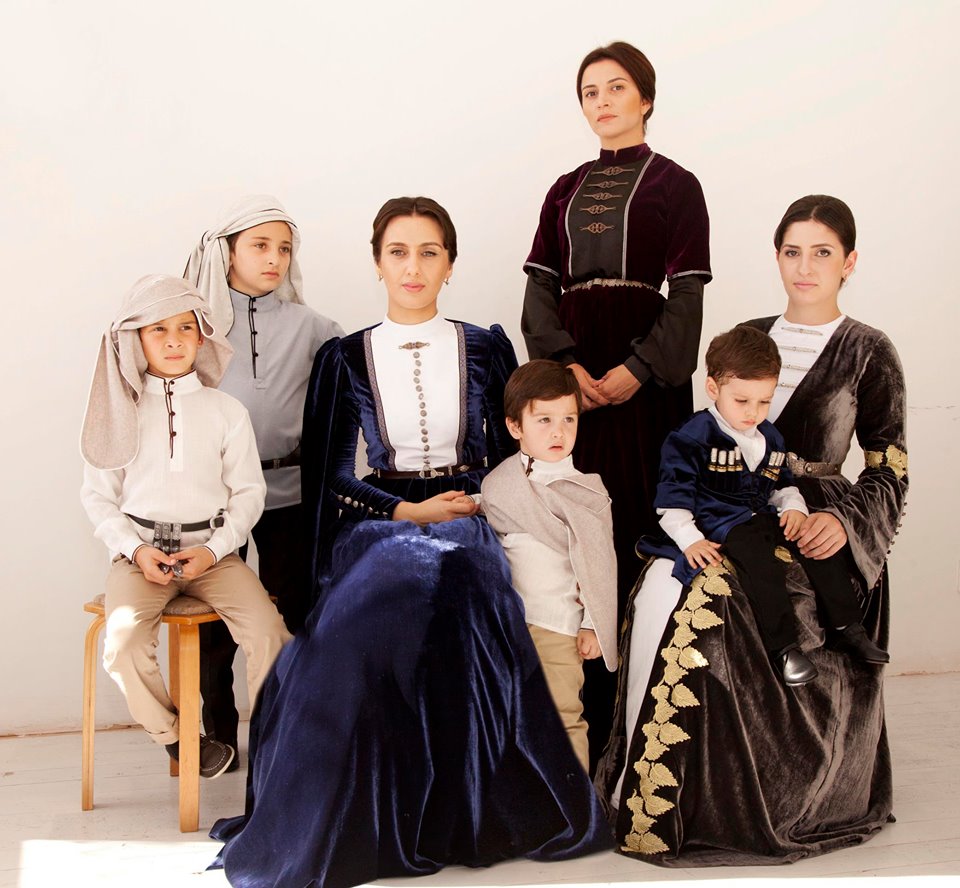
© tppra.org
"The Abkhaz have an expression: ‘She was so adept that she could draw a bird and, even without taking measurements from a person, sew a cherkesska’. Well, this is a skill, traditions that were passed down from generation to generation," explained Elvira Arsalia .
The clothes of an Abkhazian woman were made of cloth, which they themselves wove on special machines. As the Minister of Culture noted, the fabric was worth its weight in gold. And therefore the craftswomen had to sew costumes so that not a single small piece was shed.
"And it was a very rational cutting out of a garment, which gathered the architecture of the costume in a corresponding shape," she added.
The colour too had great importance. According to Arsalia, there is a concept of the Abkhazian spectrum – of the colours that were used in Abkhazian costumes. As a rule, these were: grey, brown, deep burgundy, white, black. Other colours appeared in the last century.
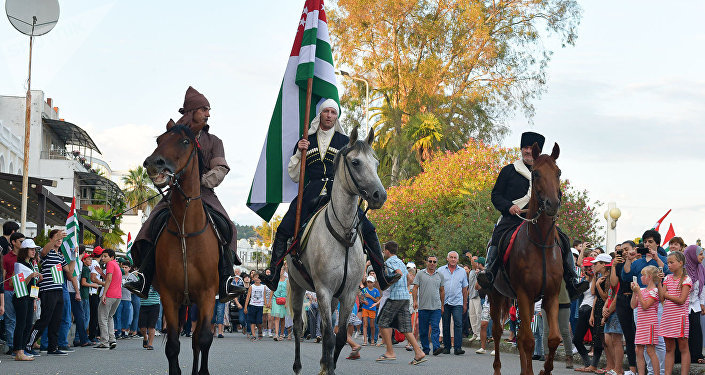
Fashion in the cherkesska
The end of XIXth and the beginning of the XXth century, according to Arsalia, can be considered the triumph of the cherkesska as a costume, which earned the attention of many peoples for whom the cherkesska was not the national costume. During the First World War, the cherkesska became a symbol of valor and military honour.
"There were Ingush, Abkhazian, and Chechen regiments who participated in the First World War. And, of course, it was with horse, weapons, and the national costume with which people went to war. The cherkesska as the the maximally comfortable form of dress merited great attention. Before the First World War War, the tsarist army did not wear the cherkesska. At this time, the tailors of the imperial court developed a special form of cherkesska, which was adapted for military needs," explained Elvira Arsalia.
Even the members of the royal family, not excluding Emperor Nicholas II, dressed in the cherkesska. There is even a portrait of Nicholas II on a black horse in a red cherkesska. It was in a cherkesska that the pan-Russian Emperor met the fateful moment of his life.

The Caucasian male costume which belonged to the last Russian tsar is today exhibited in the museum-reservation of Tsarskoye Selo.
After the 1917 revolution, many representatives of both the Caucasus and Russia emigrated to France. There, thanks to them, the cherkesska had a great influence on fashion.
"There was a certain aesthetics regarding the wearing of the cherkesska. At that time, there successfully working in Paris several Caucasian houses which sewed clothes in the Caucasian manner. They had great success in their 10-15 years of existence. The originators of these houses were from the Caucasus," said Elvira Arsalia in relating this interesting history.
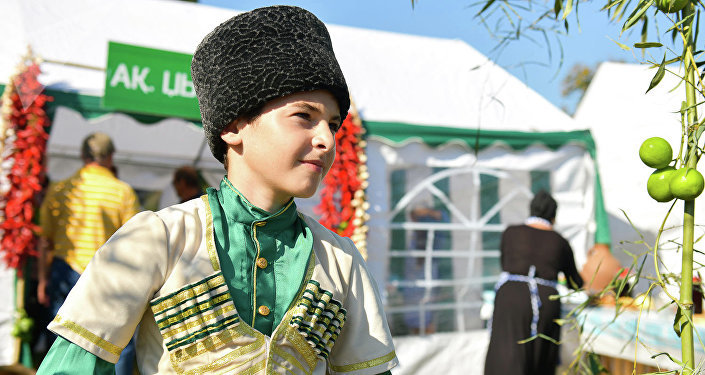
Not only the akw’ymzhWy but also other elements of a men's attire were widely adopted in Russia and in Europe. This fact is reflected in Russian literature. So episodes with bashlyks can be found in Leo Tolstoy’s ‘Anna Karenina’ and in Marina Tsvetaeva’s verse.
"The bashlyk she threw over her shoulders:
It makes one laugh to skate in a bashlyk!
She laughs – is it really true that on the rink
Fatal meetings occur?"
"This element in and of itself attracted the attention of many travellers across the Caucasus also. The French and Italians noted the absolute universality of this element of clothing, in which it was possible to pick grapes, to carry a child, and, girding oneself, to climb up a mountain, and to bandage a wounded person. For the manner of wearing a bashlyk there are particular rules: for solemn occasions, for mourning, and so on,” explained the Minister of Culture of Abkhazia.
In the 1930s, the akw’ymzhWy gradually disappeared from everyday wear. Only the ak’aba continues to be worn as a separate element.
This article was published by Sputnik Abkhazia and is translated from Russian.